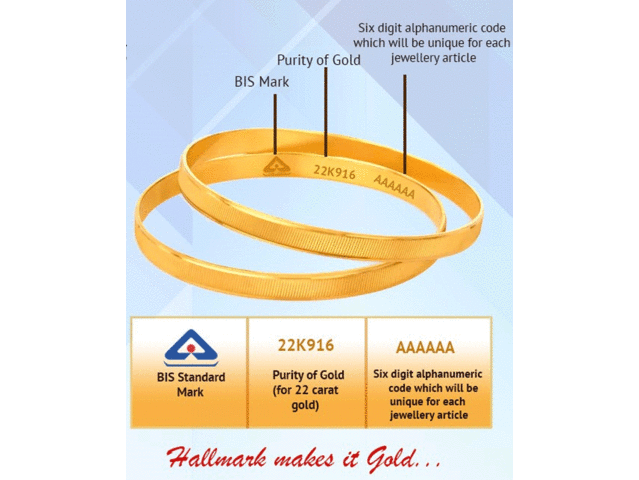Importance of hallmarking…
Picture courtesy: https://economictimes.indiatimes.com/wealth/spend/three-signs-to-check-for-purity-of-gold-of-bis-hallmarked-jewellery/articleshow/91172525.cms
India's love for gold is well-known, and the government has mandated hallmarking of gold jewelry to protect consumers' interests and ensure the purity of gold sold in the country. This blog post will provide details about the techniques to check the bis hallmark in India.
The tradition of hallmarking gold in India dates back to ancient times. However, the widespread practice of hallmarking gold was not adopted in India until the 20th century. In 2000, the Bureau of Indian Standards (BIS) introduced the 916 KDM hallmark to ensure the purity of gold jewelry. This hallmark indicates that the gold used in a particular piece of jewelry is 91.6% pure.
To check if the gold jewelry is hallmarked, look for the BIS hallmark. It consists of a BIS logo, a three-digit number indicating the purity of gold in terms of parts per thousand, and an identification mark of the hallmarking center. The hallmarking center's identification mark is a code consisting of five digits, with the first two digits indicating the state code where the center is located, and the last three digits indicating the center's unique identification number. The jeweler's identification mark is also present, indicating the jeweler's unique identification number.
The hallmarking system ensures that consumers receive what they pay for and helps prevent fraud in the sale of gold jewelry. In 2019, the government of India announced that hallmarking of gold would become mandatory from 15 January 2021. This step was taken to protect consumers from fraud and to ensure that the purity of gold sold in the country meets the set standards.
PRR Swarna Maaligai, as a leading gold jewelry retailer in the rural area of Thammampatty in Salem district, introduced hallmarking way back in the 1980s, decades before it was mandated by the government of India. The management at PRR Swarna Maaligai recognized the importance of ensuring the purity of gold sold to customers and the need to establish trust with customers. The hallmarking system they implemented included a set of marks indicating the purity of gold, the year of manufacture, and the jeweler's identification mark. The management made sure that every piece of gold jewelry sold at their outlet was hallmarked.
Consumers must look for the BIS hallmark while purchasing gold jewelry to ensure the purity of the gold. The government-mandated hallmarking system for gold in India is a step in the right direction to protect the interests of consumers. The tradition of hallmarking gold in India dates back to ancient times, and it is heartening to see that the practice continues to this day. PRR Swarna Maaligai is a testament to the importance of ensuring the purity of gold sold to customers and the need to establish trust with customers, having implemented hallmarking way back in the 1980s, decades before it was mandated by the government of India.
